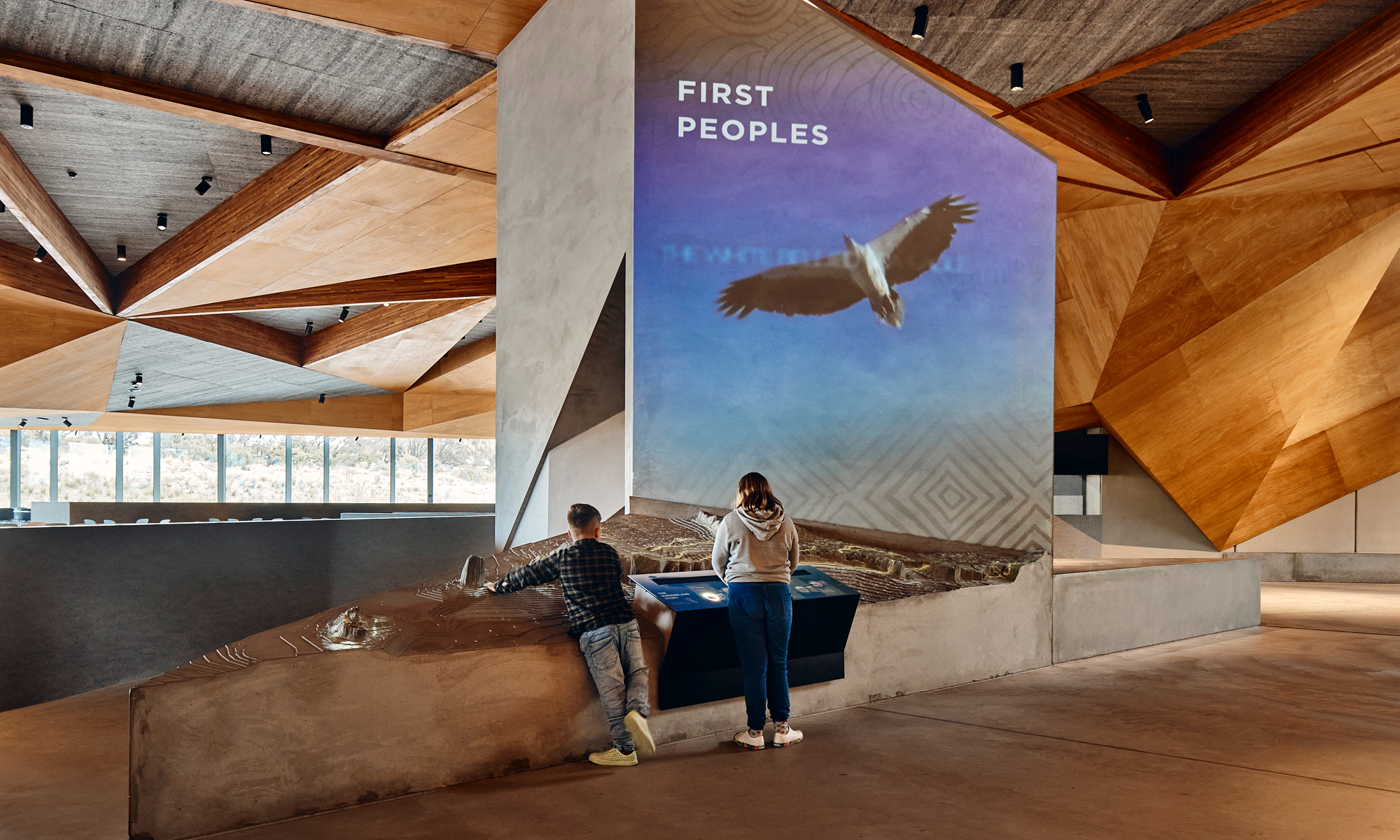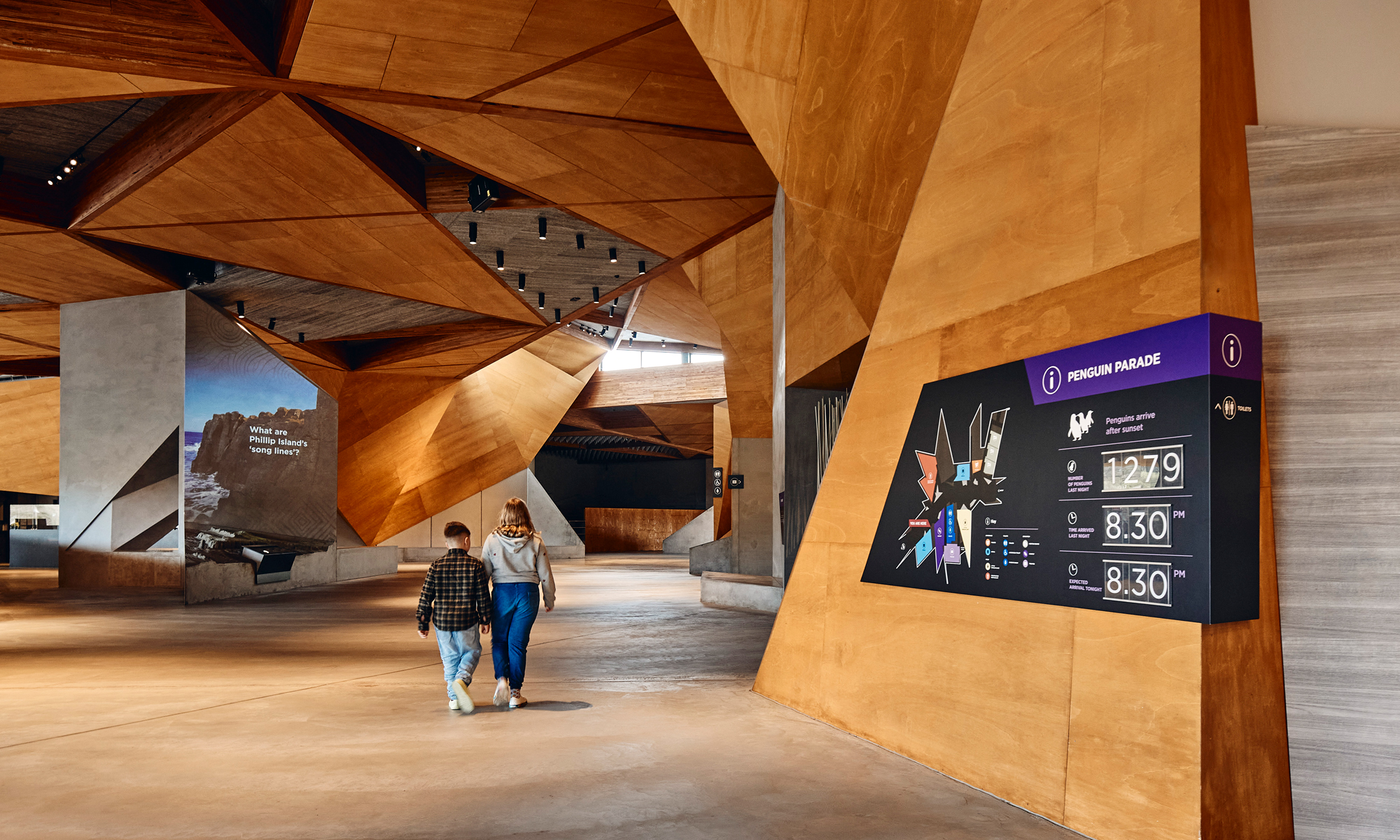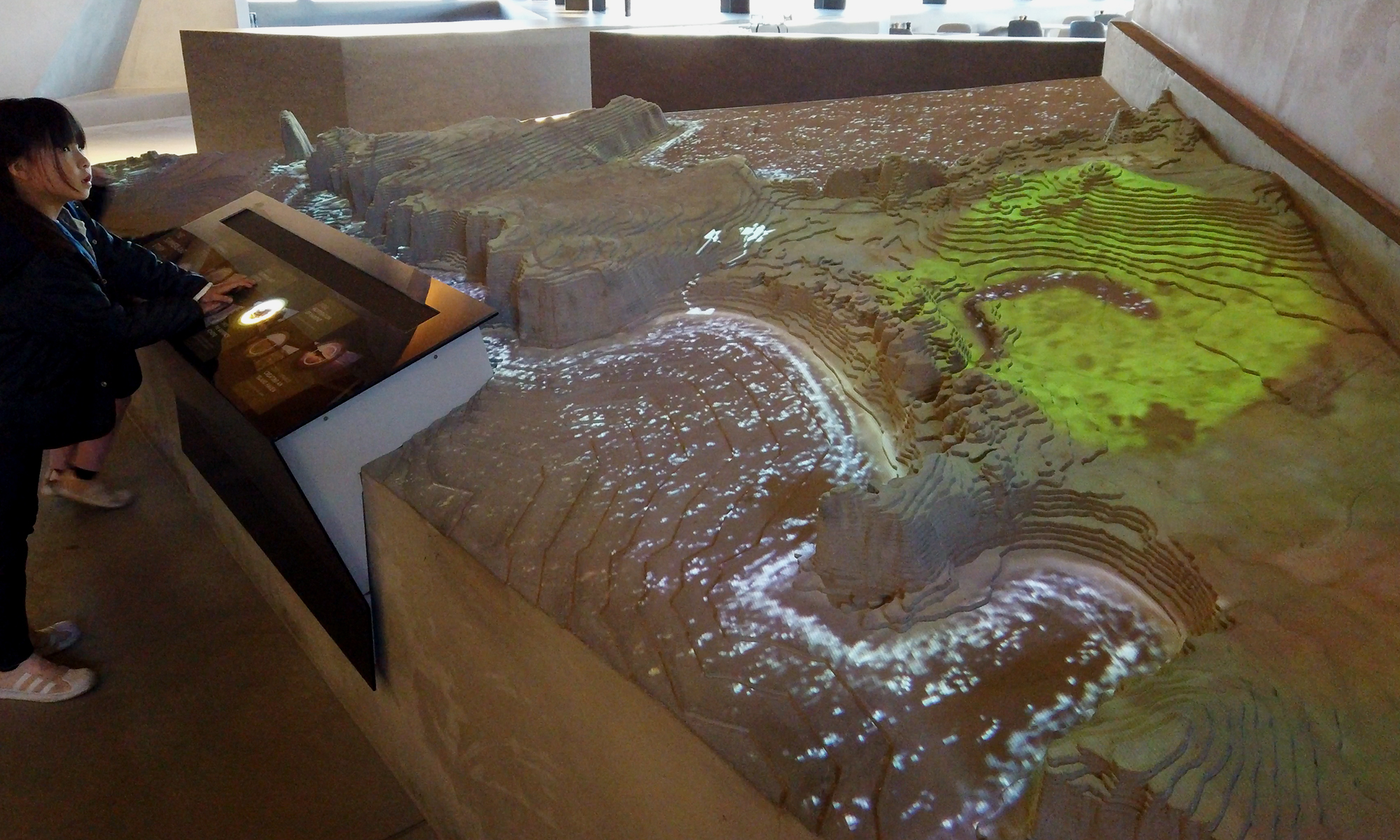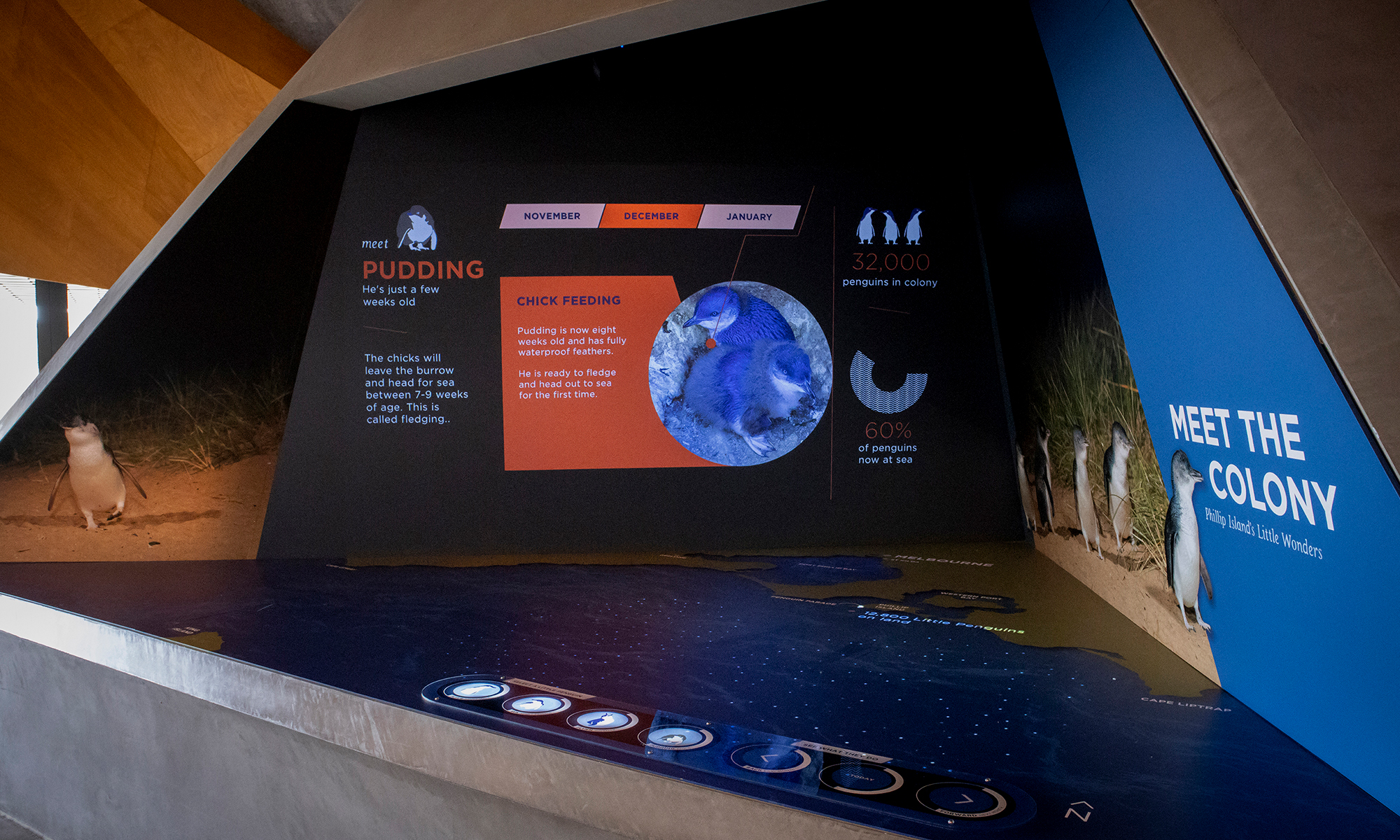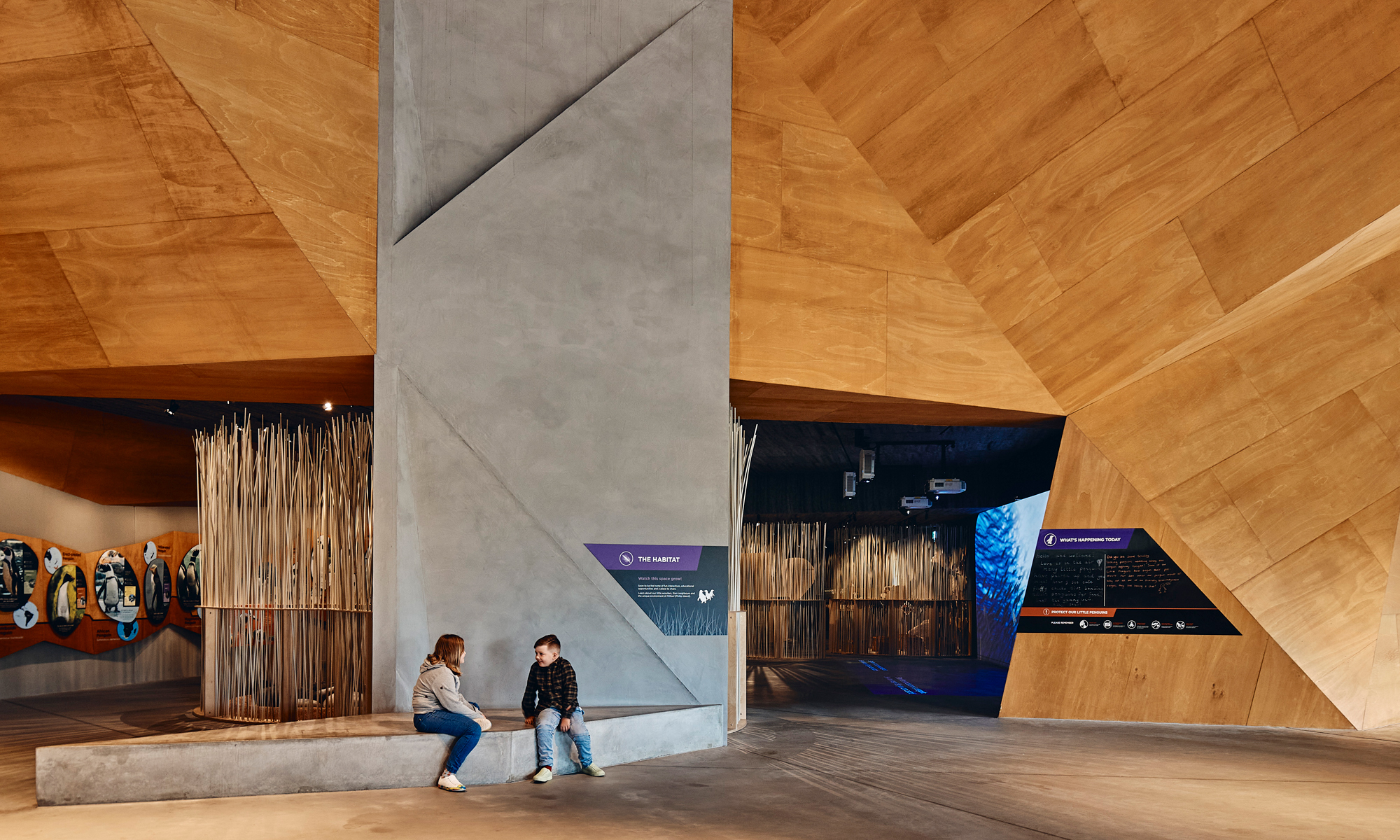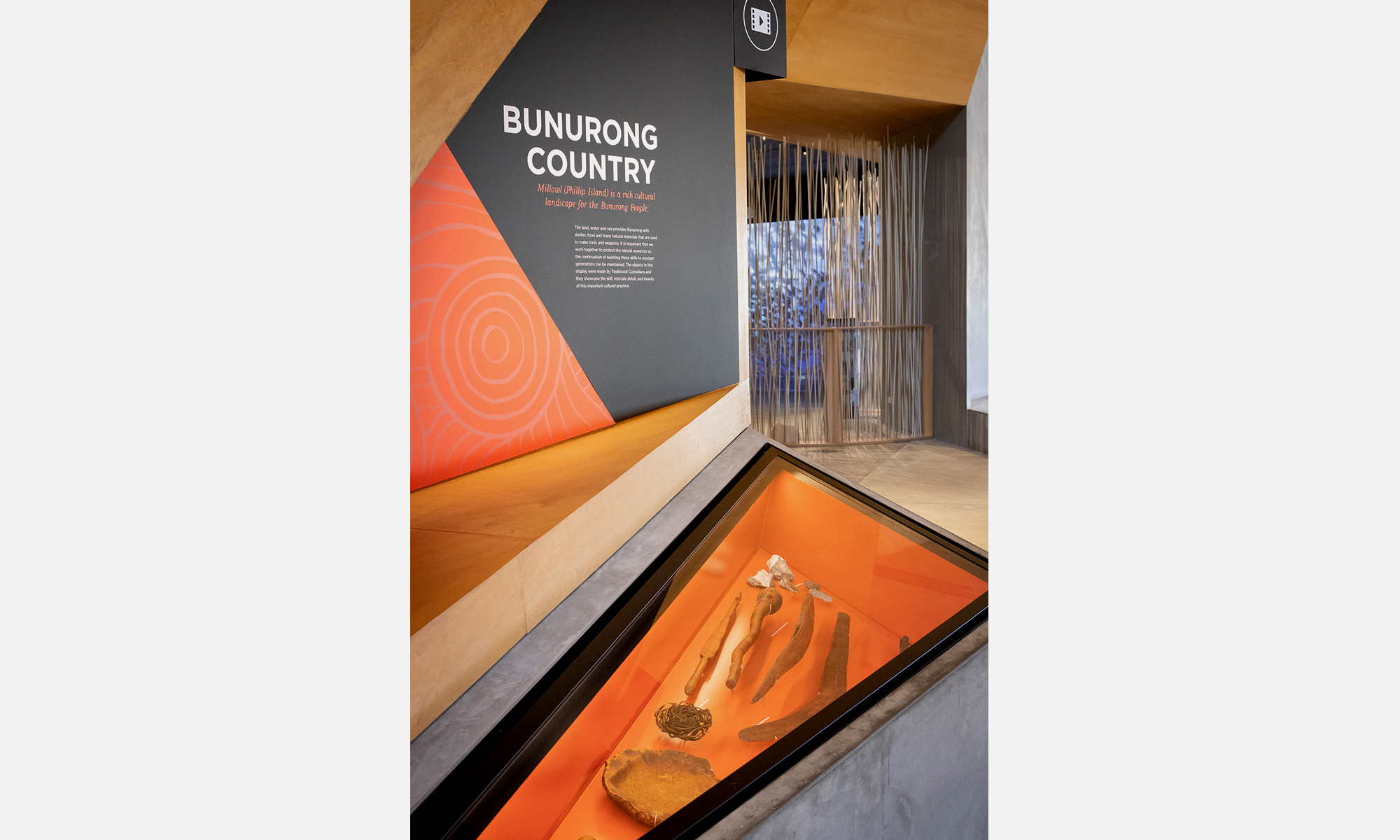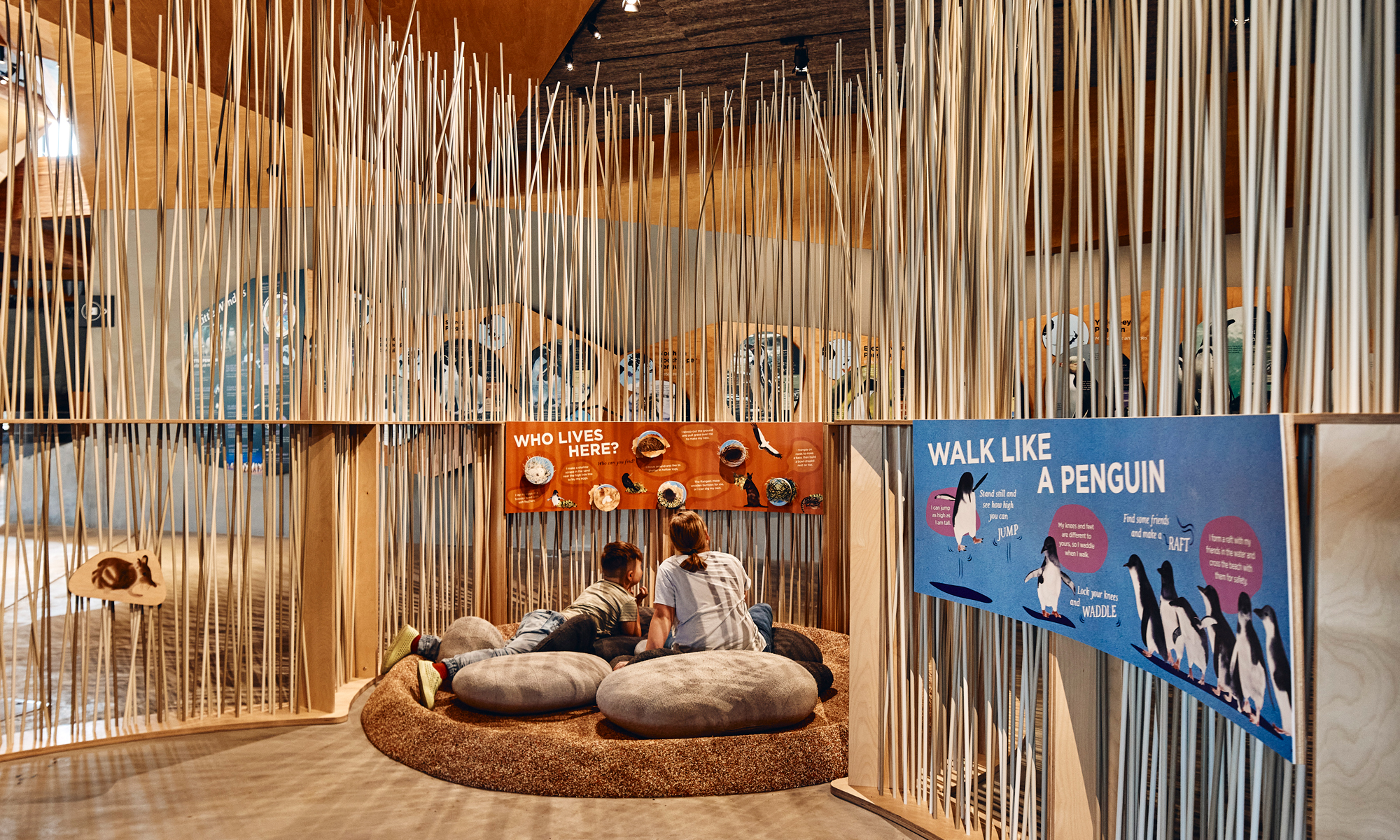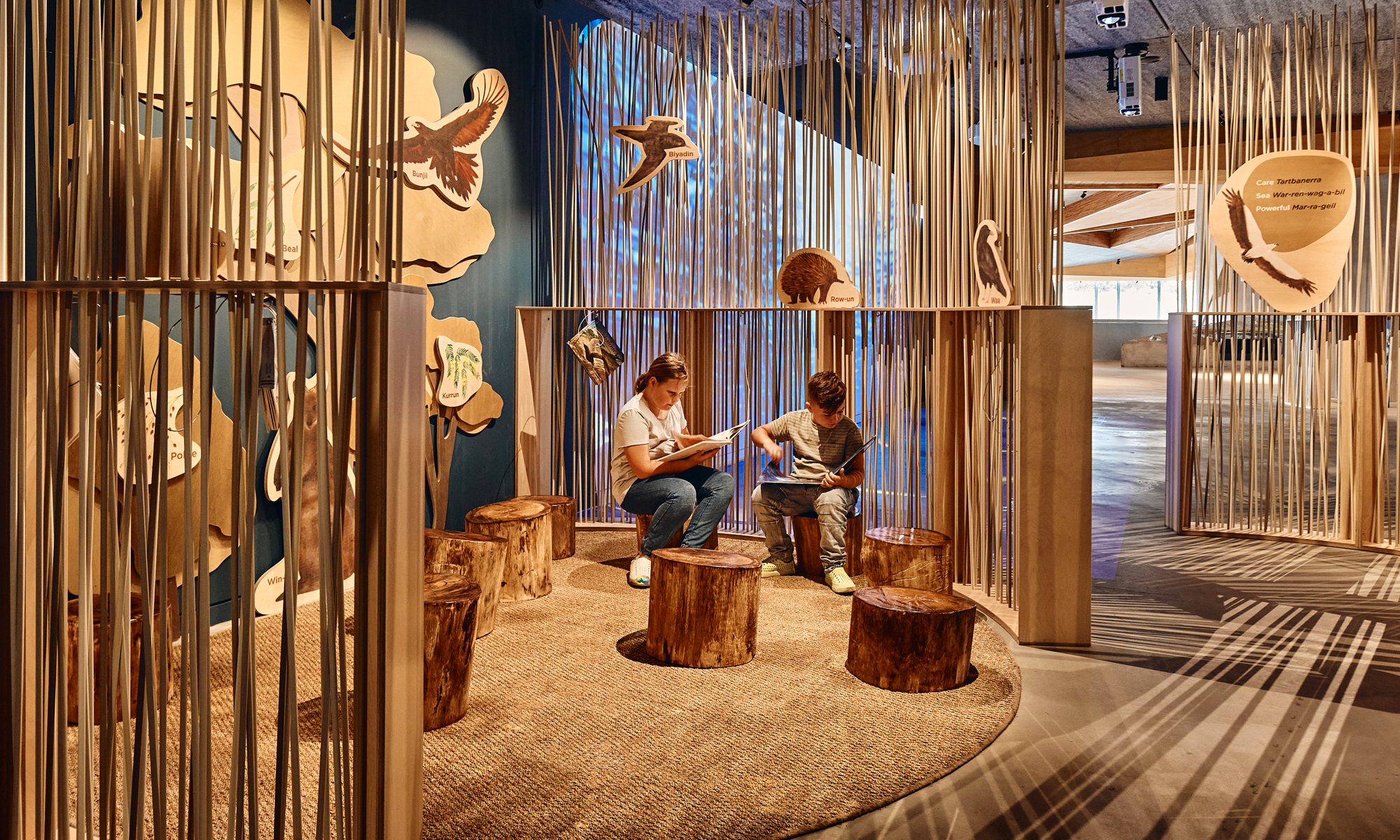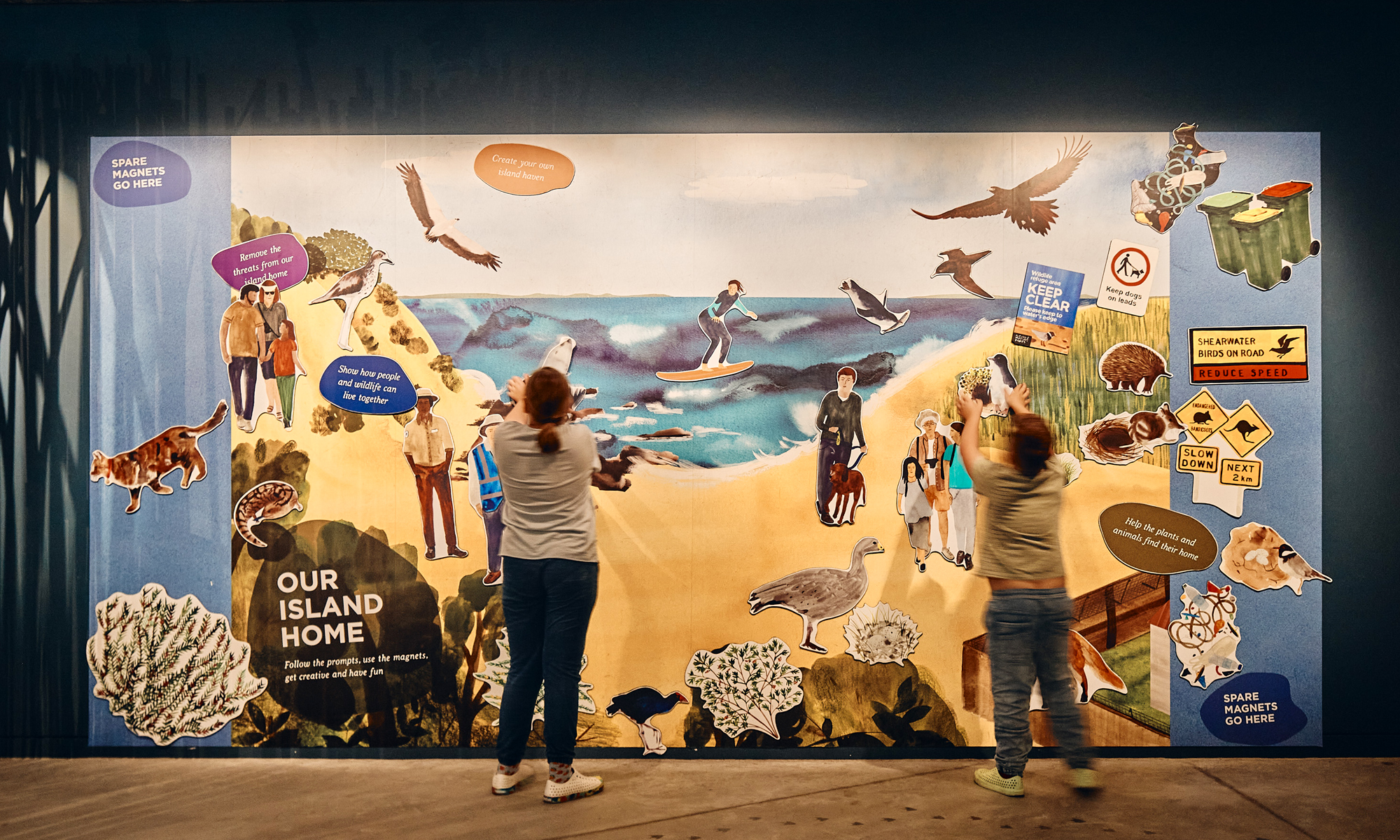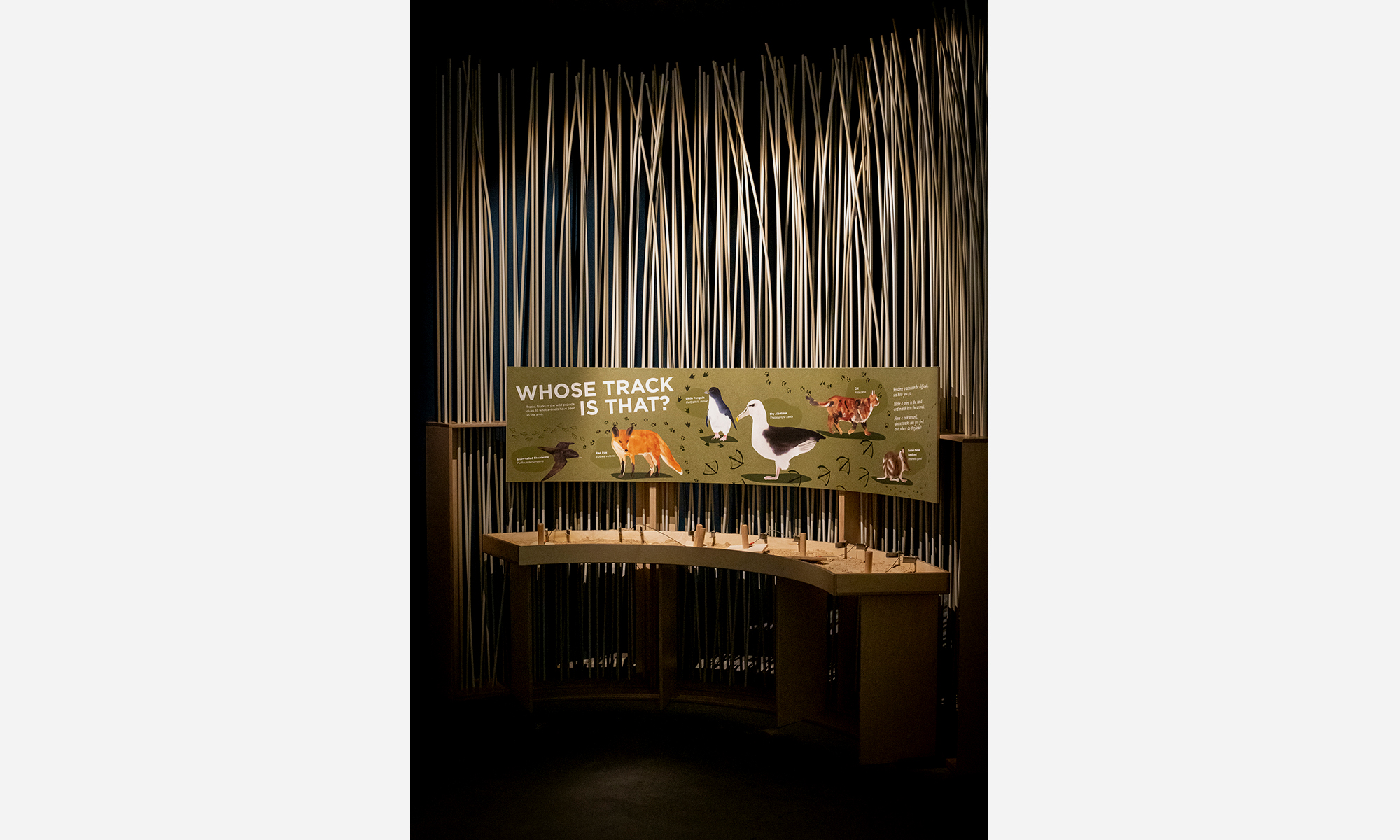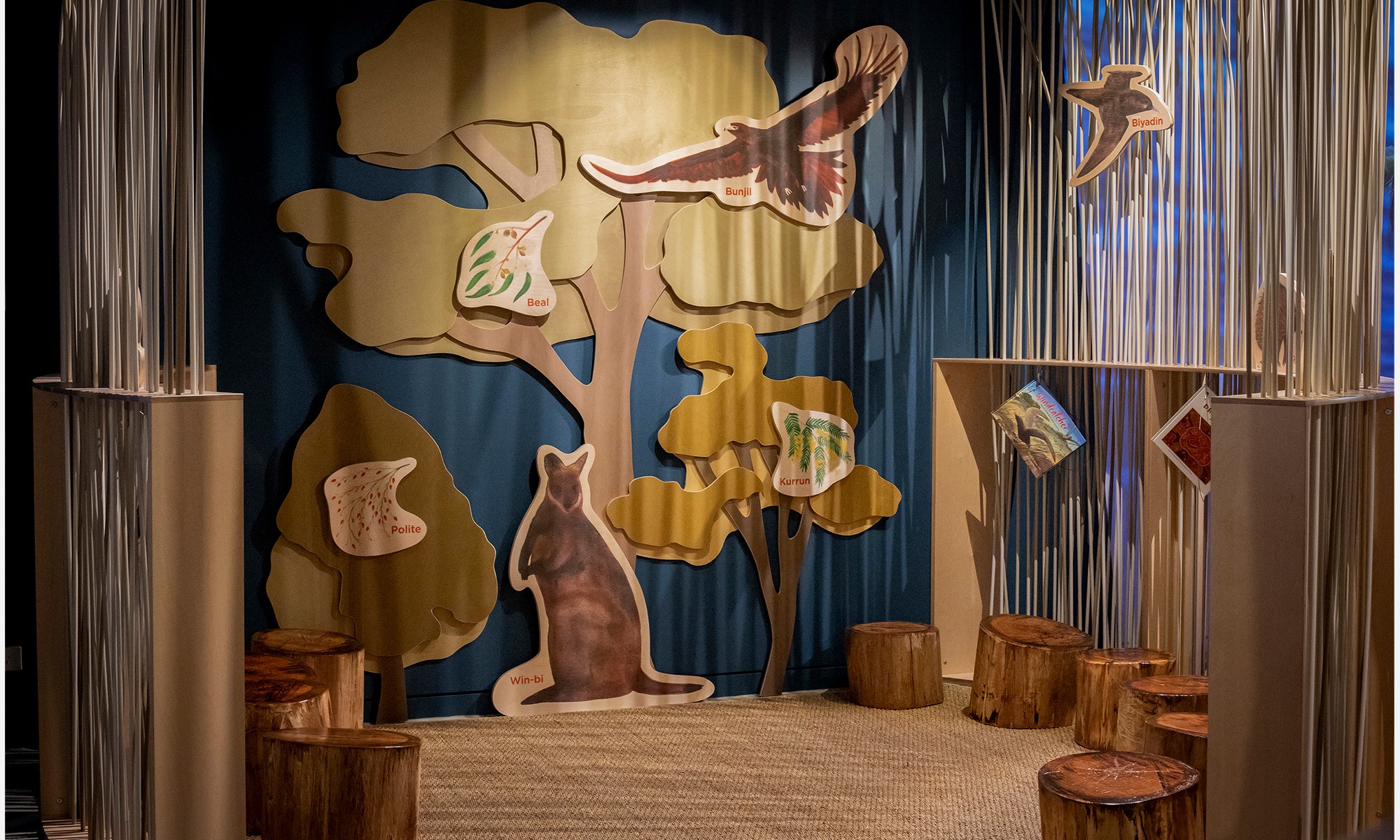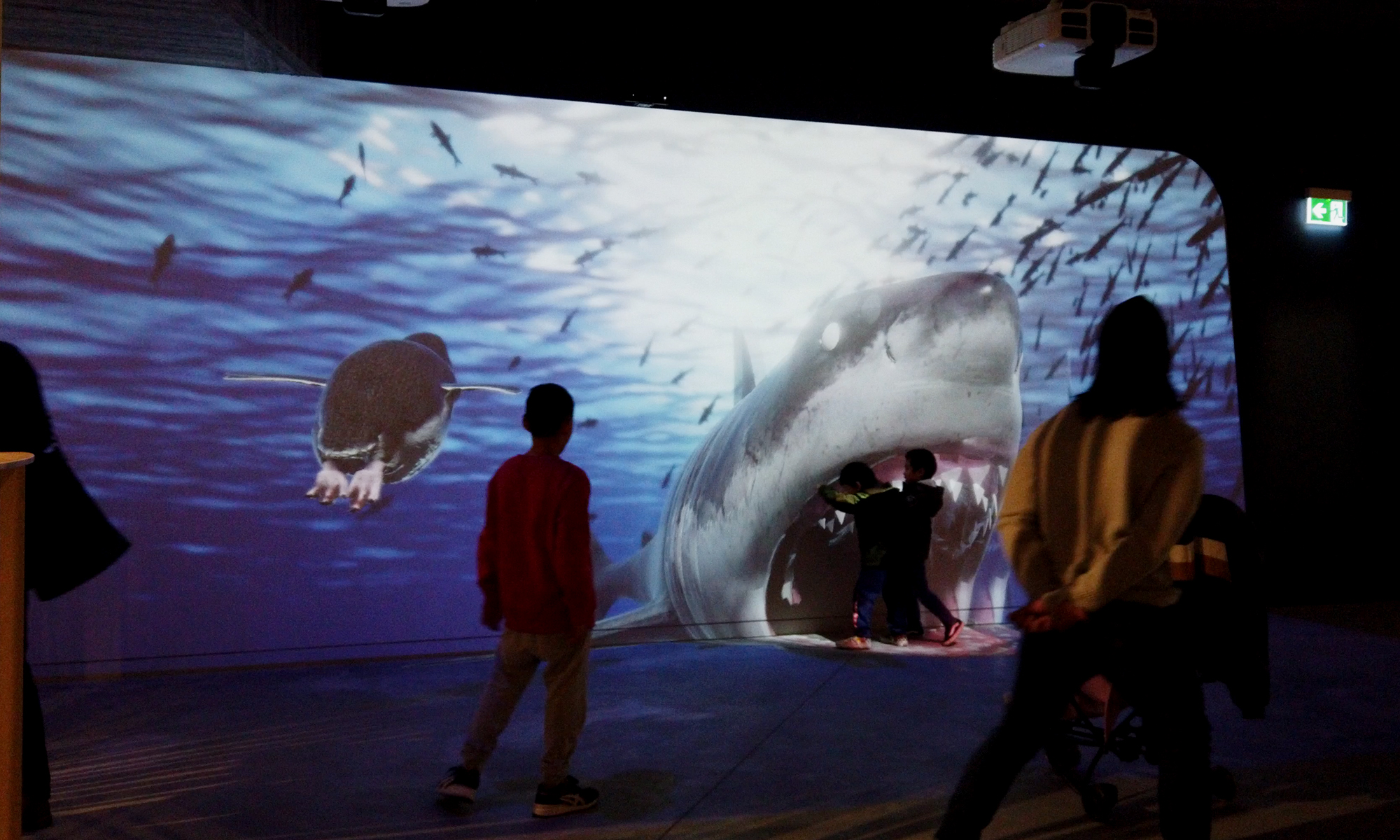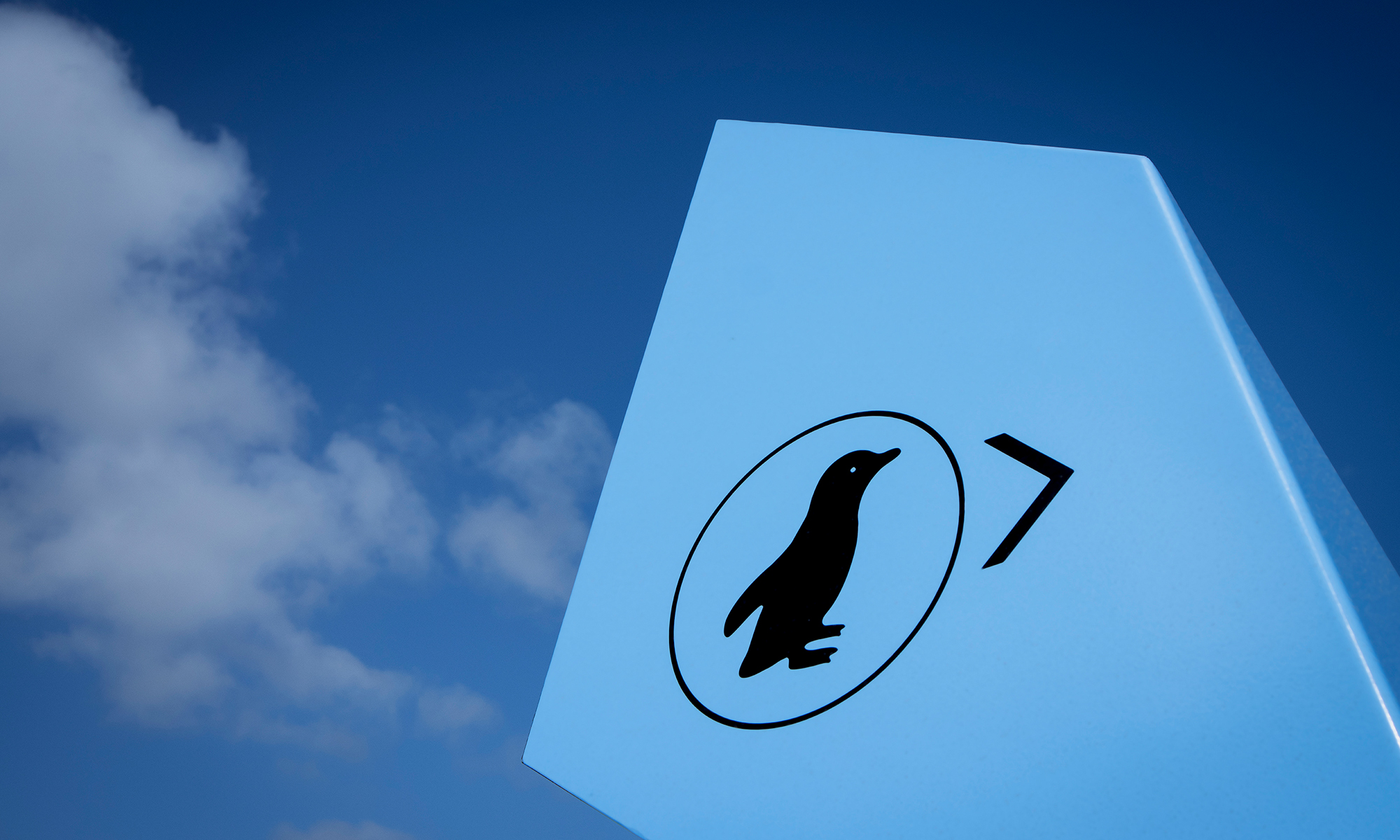Penguin Parade Visitor Centre, Phillip Island, Victoria
PERMANENT EXHIBITION
Project Commenced: July 2018
Project Completed: April 2020
Floor Area: 1798 m²
Thylacine’s role
- interpretive design
- graphic design
- media design
- lighting design
- exterior signage design
- wayfinding design
Awards
DNA Paris Design Awards 2021
Winner Interior / Civic Buildings
Australian Interior Design Award 2021
Shortlist Installation Design
Dezeen Awards 2021
Longlist Exhibition Design
The goal of interpretive design at the Penguin Parade Visitor Centre was to foster a strong feeling of connection between visitors and the unique environment of the Summerland Peninsula, home to Australia’s largest colony of Little Penguins and the important conservation work being undertaken there.
We worked collaboratively with Terroir and Phillip Island Nature Parks to deliver a strong design that both enhanced visitor engagement and facilitated visitor flow and wayfinding, our designs for interaction and information inhabit the striking architecture of the award-winning new centre.
We prioritised inclusivity by privileging non-language-based interpretation such as moving images, gameplay, atmospheric sound and light, digitally augmented 3d map, theatrics, physical interaction, a strong graphic style, bespoke illustration, symbol-based user experience, and the element of surprise. This makes the space accessible to a range of visitors, from the very young to the older visitor, as well as international visitors whose preferred language is not English.
The Visitor Centre incorporates a range of interactives designed to appeal to diverse learning styles. Visitors can stop to pose with sculptural penguins for a photo, scan their ticket to find how their money contributes directly to conservation projects, or discover the striking concrete 3D map of the Summerland Peninsula which is digitally augmented to tell the big picture story of the place they are standing.
Throughout the Centre, visitors are invited to experientially engage with content. In the ‘Habitat’ area, visitors are reduced by their surroundings to the size of Little Penguins, and immersed in sea, beach and burrow habitats. Stylised tussock grasses populate the gallery, like giant incomplete baskets, mimicking the dunescape that Little Penguins navigate each night on their way to their burrows.
As the visitor explores this immersive landscape, they discover secret spaces, physical interactives, games, and stories. Theatrical interactions and responsiveness characterise the space, where high resolution projections draw the visitor into the penguins’ world. Threats (foxes!) and allies (rangers!) play a part in this environment, where fun, surprise and exploration create a place to discover and interact with the penguins’ environment, delighting the young and young-at-heart alike.
Thylacine places great value on delivering projects with strong principles. Here, our commitment to ethical design was evidenced through:
Environment and sustainability:
The building has strong sustainability goals, being designed and constructed to have a very small carbon footprint. We continued this theme through the interpretation, from the customised ‘where my money goes’ screen, which gives each ticket-holder a connection to the positive impact their presence is having on conservation at Summerland, to the materials used for interpretation within the Visitor Centre.
Simple and modular construction techniques were prioritised, and timber was used wherever possible, reducing non-renewable materials in the fit-out.
Incorporating First Nations perspectives:
It was important to us to highlight the rich heritage of custodianship by the Bunurong people, who have cared for this site over thousands of years. As visitors approach the Centre, a Welcome to Country installation invites them to recognise this connection, incorporating words of welcome in the Bunurong language, and asking visitors to take care of this place too. Here, visitors have the opportunity to divert from the main path toward the Caring for Country Circle, a meeting place with a focus on the First Nations people of Phillip Island.
Bunurong language, story and objects are included in interpretation within the Centre, emphasising the continuous culture and connection to country of First Nations people, and reinforcing the underlying message of ongoing care for country
Within the walls of the Penguin Parade Visitor Centre Thylacine have designed a range of encounters highlighting the important conservation work of Phillip Island Nature Parks and supporting the agency of visitors to continue conservation action at home. Our success is measured in the memories of rich, authentic experiences that visitors take with them.
Client Phillip Island Nature Parks. Project partners Terroir, media designers Mental Media, lighting designer Benjamin Cisterne, graphic designer Gemma Field, Tract and Kane Constructions.
Photography by Peter Bennetts, Gemma Field and Mental Media.

